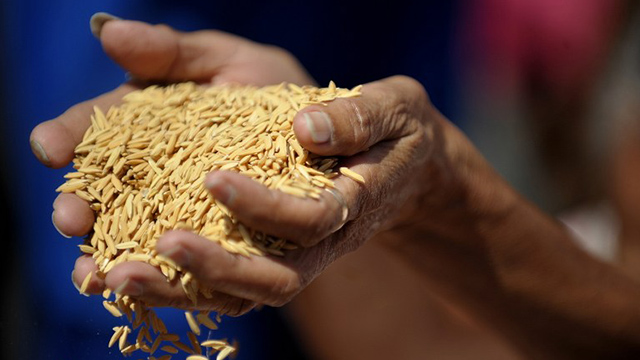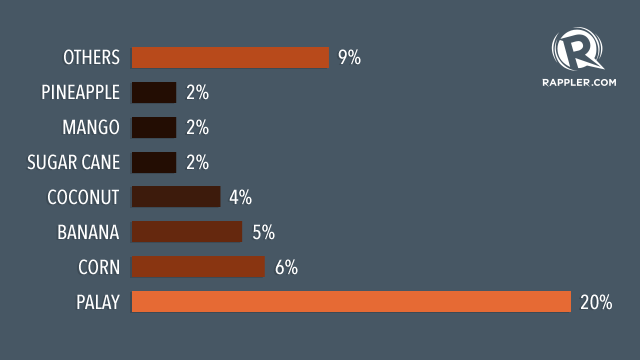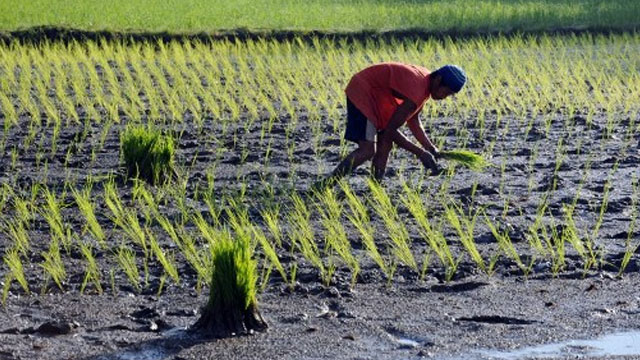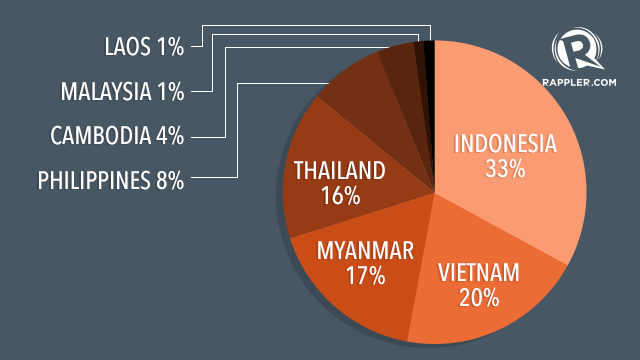SUMMARY
This is AI generated summarization, which may have errors. For context, always refer to the full article.

MANILA, Philippines – Better nutrition begins with improving agriculture, according to the Food and Agriculture Organization (FAO).
“The traditional role of agriculture in producing food and generating income is fundamental, but agriculture and the entire food system – from inputs and production, through processing, storage, transport and retailing, to consumption – can contribute much more to the eradication of malnutrition,” the FAO said.
The Philippines is one of the world’s “mega biodiversity” countries, rich in both fauna and flora.
“While the country is abundant in natural resources, environmental assets remain unavailable to poor groups owing to exclusion, insecure land tenure, lack of access to technologies; or the resources are degraded,” the United Nations Development Programme (UNDP) emphasized.
Local groups like the Philippine Rural Reconstruction Movement (PRRM), Unyon ng Manggagawa sa Agrikultura (UMA), Kilusang Magbubukid ng Pilipinas (KMP), and Alyansa ng Magbubukid sa Asyenda Luisita (AMBALA) agree with the UNDP’s observation.
The situation in Hacienda Luisita is a prime example of such predicaments – farmworkers toiling away for several years only to receive little or nothing in return, according to farmers’ organizations.
“For every one farmer in the developed world, there are 19 in the developing world. Where there is mechanization, fewer workers can produce more food,” the FAO said. In response to this issue, the Department of Agriculture (DA) established the Philippine Center for Postharvest Development and Mechanization.
In 2012, agriculture had a 32% share in the total employment, according to the Philippine Statistics Authority (PSA). This is slightly lower than in previous years.
Total employment |
37.61 million people |
|---|---|
Agricultural employment |
12.09 million people |
However, the share of agriculture in the country’s economy was only 11%, according to PSA.
In 2013, the government announced that it will focus on creating more jobs in the agriculture sector.


The World Bank reported that the share of agriculture in the country’s economy has been halved over the years, from 24.6% in 1985 to 12.8% in 2011.
PSA noted that in 2012, the country’s earnings from agricultural exports were lower by 7.9% from the previous year, while import expenditures grew by 3.6%.
These figures may seem baffling since the Philippines is a predominantly agricultural country, yet improvement in the agriculture sector has been rather slow.
Agriculture and poverty
The FAO stressed the need for policies enhancing agricultural productivity and food availability.
“Agricultural productivity growth contributes to better nutrition through raising incomes, especially in countries where the sector accounts for a large share of the economy and employment, and by reducing the cost of food for all consumers,” the FAO explained.
A study by the Organization for Economic Co-operation and Development (OECD) suggested that agricultural growth contributes to a country’s overall poverty reduction.
“The payoff from investments in agricultural research, development, extension and education comes in the form of sustained increase in agricultural productivity,” the study said. This can increase the GDP/agricultural worker, positively contributing to poverty reduction.
Fishermen and farmers have always had the highest poverty incidence among the country’s basic sectors from 2003 to 2009, according to the National Statistical Coordination Board (NSCB).
| Poverty incidence | 2003 | 2009 |
|---|---|---|
| Fishermen | 35% | 41.4% |
| Farmers | 37% | 36.7% |
Poverty incidence among fishermen grew in the past six years while poverty incidence among farmers remained virtually unchanged. Region IX had the highest poverty incidence among farmers at 54%. For fishermen, the highest was in CARAGA, at 59.2%.
It is quite ironic that those who are providing most of the nation’s food are also among the most food insecure.
“Achieving food security means not just ensuring that sufficient food is produced, but also that everyone has access to it – and failures of access to food, particularly for the most marginal communities, are largely hidden from the public view,” the United Nations Economic and Social Commission for Asia and the Pacific (UNESCAP) stressed.
The UNESCAP advised countries to take care of its environment to achieve agricultural sustainability and food security. The FAO reported that around half of the Philippines’ irrigated cropland “has already been lost to urban development.”
GDP growth not enough?

“Poverty encompasses different dimensions of deprivation that relate to human capabilities including consumption and food security, health, education, rights, voice, security, dignity and decent work,” the OECD said.
Despite the country’s recent strides in its economic performance – 7.2% GDP growth in 2013 – more Filipinos were hungry by the end of 2013. According to the latest Social Weather Stations (SWS) survey, 41% of Filipino households (or 8.8 million households) claim to be food-poor.
What does this paradox tell us?
According to the FAO, economic growth alone will not solve food insecurity, it must be paired with:
- Income growth
- Direct nutrition interventions
- Investment in health, water, education
The FAO emphasized the importance of pro-poor policies. “The growth can raise incomes and reduce hunger, but higher economic growth may not reach everyone. It may not lead to more and better jobs for all, unless policies specifically target the poor, especially those in rural areas.”
“In poor countries, hunger and poverty reduction will only be achieved with growth that is not only sustained, but also broadly shared,” the FAO added.
The Philippines must also improve its calamity preparedness and recovery systems. The FAO reported that by the end of 2011, the Philippines lost over 600,000 tons of milled rice due to typhoons, while 6% of the country’s rice farmlands were destroyed.
After Typhoon Yolanda (Haiyan), agricultural damages amounted to P31.13 billion as of January 2014, according to DA.
Hungry tiger cub?
Rice is a staple food for most Southeast Asian countries, including the four “tiger cub economies” – the Philippines, Indonesia, Malaysia, and Thailand.

Despite being an agricultural country, the Philippines has “begun to develop an untenable dependence on imported rice to ensure sufficient national stocks,” according to the FAO.
The International Rice Research Institute (IRRI) reported that in 2010, the Philippines “had to import 2.45 million tons of rice to address domestic requirements.”
The battle against food insecurity and hunger is a fight fought by many. Other developing nations in Southeast Asia are also trying to achieve the UN Millennium Development Goal (MDG) of alleviating extreme hunger and poverty by 2015.
| Food inadequacy | 2005-07 | 2006-08 | 2007-09 | 2008-10 | 2009-11 | 2010-12 |
|---|---|---|---|---|---|---|
| Brunei Darussalam | <5.0 | <5.0 | <5.0 | <5.0 | <5.0 | <5.0 |
| Cambodia | 34.0 | 32.5 | 32.0 | 31.0 | 29.3 | 27.1 |
| Indonesia | 24.6 | 23.2 | 21.7 | 19.7 | 17.8 | 15.8 |
| Lao People’s Democratic Republic | 41.9 | 40.9 | 39.1 | 38.3 | 38.0 | 38.3 |
| Malaysia | 7.1 | 7.0 | 6.8 | 7.1 | 7.1 | 6.9 |
| Myanmar | 34.6 | 33.4 | 32.9 | 31.7 | 31.0 | 29.5 |
| Philippines | 25.5 | 23.5 | 22.5 | 22.7 | 23.4 | 23.8 |
| Thailand | 18.8 | 19.0 | 19.1 | 18.5 | 16.6 | 15.5 |
| Timor Leste | 37.9 | 39.0 | 38.6 | 37.7 | 42.1 | 46.1 |
(Source: NSCB, FAO)
The lower the level of food inadequacy, the better. Compared to other Southeast Asian countries, the Philippines lies somewhere in the middle.
From 2010-2012, the Philippines had the 5th highest food inadequacy at 54%, behind Cambodia (27.1%), Myanmar (29.5%), Laos (38.3%), and Timor Leste (46.1%), according to the FAO.
Among Asia’s so-called “tiger cubs,” the Philippines had the highest prevalence of food inadequacy. The others – Malaysia (6.9%), Thailand (15.5%), and Indonesia (15.8%) – are making leaps in reducing inadequate food access.
In 7 years, or from 2005-2012, the Philippines reduced its food inadequacy by only 1.7% compared to Indonesia (8.8%) and Thailand (3.3%).
According to the 2013 World Food Insecurity Report of the FAO, 15.6 million Filipinos were undernourished from 2011 to 2013. This barely changed since 1990, when it was at 15.5 million.
These figures paint a picture of how serious the Philippines is in its fight against hunger and poverty.
Though we may be lagging behind in the past few years, it is never too late to pick up our pace; after all, the challenge to alleviate hunger goes beyond 2015. – Rappler.com
Add a comment
How does this make you feel?
There are no comments yet. Add your comment to start the conversation.